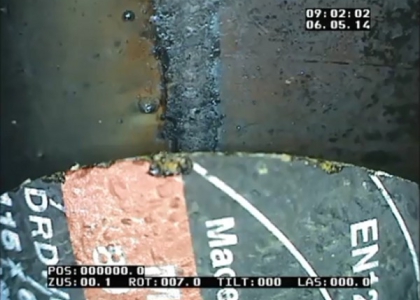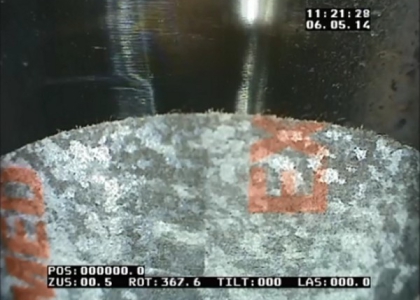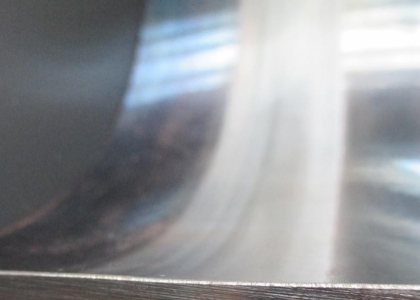The worldwide oil production is shifting increasingly into the deep sea. After the global Offshore Production made up for a quarter of the total oil production in 1990, in 2010 it was already a third – trend rising. Consequently the depths of the world’s oceans are becoming more and more interesting to such an extent, because the gas and oil reserves on land are dwindling.
Machine parks lying on the bed of the sea convey oil over many miles of pipes onto land or to floating platforms on the surface. Thereby it is only possible with the massive support of machinery to lay a “hand” on the components of these conveying structures in the first place – in contrast to bore holes on land direct human intervention is impossible.
In particular riser pipes are subjected to extreme mechanical stresses in deep sea and ultra-deep sea applications. They must withstand enormous lateral forces, since at different depths they are each subjected to different current patterns of the tides.
Riser pipes for the oil and gas production are complex components, which demand a great deal from the production technology. The demands are high and so sensitive, that half a millimeter can make the difference between success and ecological disaster.
INSPECTOR SYSTEMS was awarded the contract by the company Subsea Riser Products Ltd, a specialist for the development and application of riser pipe systems as well as related products for the Offshore sector, to remove altogether 37 circular weld seam roots of the riser pipe connections for their subcontractor, Pipeline Technique Ltd in Huntly / Scotland, by means of internal grinding with a remote-controlled grinding robot and to establish an obstruction-free transition between the pipe connections as well as to increase fatigue life.
These pipes are intended for the Moho-Bilondo oil field, which is situated 75 kilometers away from Point Noire off the coast of the Republic of Congo at a depth of 650 to 1,100 meters. Oil has been produced commercially there since 2008 by the French operator Total and its partners. After completion of Moho Nord, the third and final phase of the Molo-Bilondo project, from 2017 altogether 230,000 barrels of oil a day should then flow.
A welded joint is executed according to a given specification and this must then conform exactly. Before the contract for the grinding work on the weld seams actually used for the later operation was awarded, the grinding robot technology of INSPECTOR SYSTEMS first had to undergo a strict assessment and verification based on tests on weld seams in reference pipes. Through the internal grinding of the weld root the pipe misalignment was reduced and a homogeneous and smooth transition was produced between the pipe connections. After a final polishing operation the weld seam was no longer visible with the naked eye. As a result, the demonstrably greatly improved fatigue behavior of the weld seam joint, confirmed by fatigue tests, increases the service life and prevents cracking – technically convincing arguments for greatly stressed joints.
A type 5000 grinding robot was used, the grinding unit of which consists of a clamping- / centering system and a 380° reversing rotary unit with grinding motor and exchangeable grinding disk. Through the extremely precise feed of the grinding motor in the radial and axial direction it is possible to grind circumferential weld roots and also to grind out local areas point by point according to precisely defined and specified geometries with an accuracy of 0.1 mm. The work process was monitored and controlled by a high-resolution color camera.




